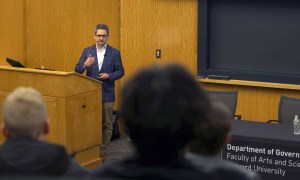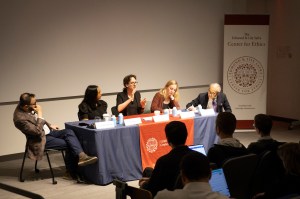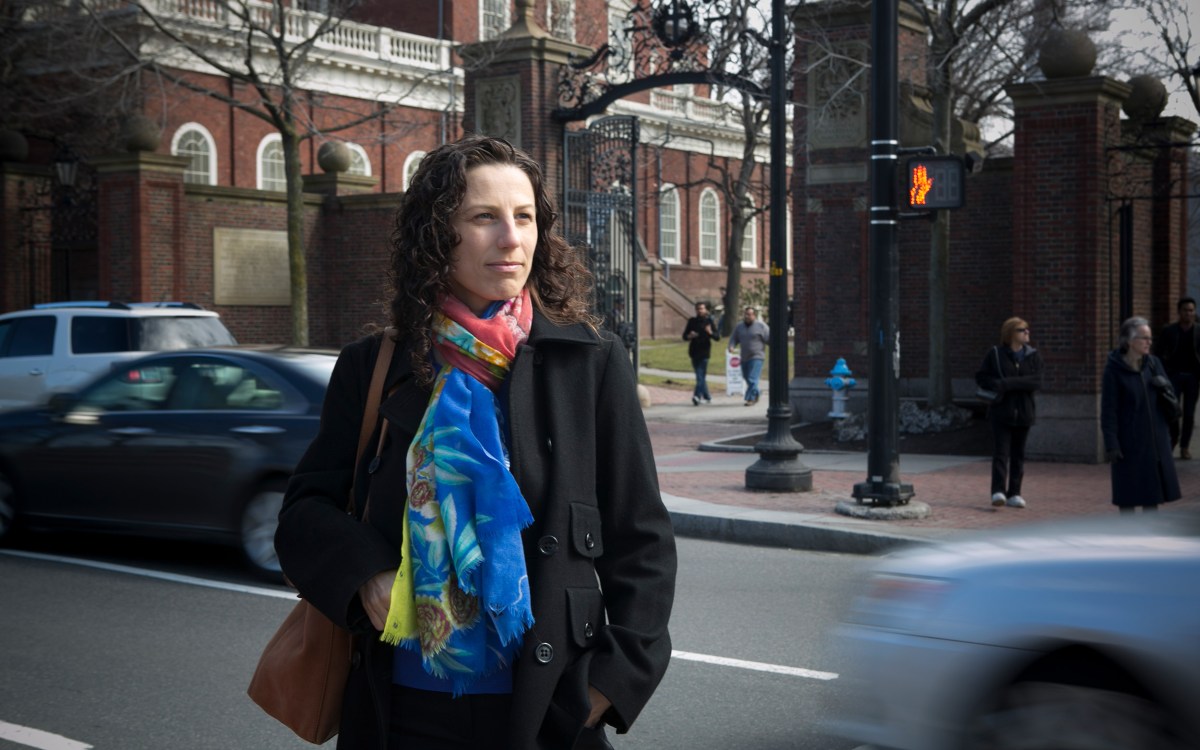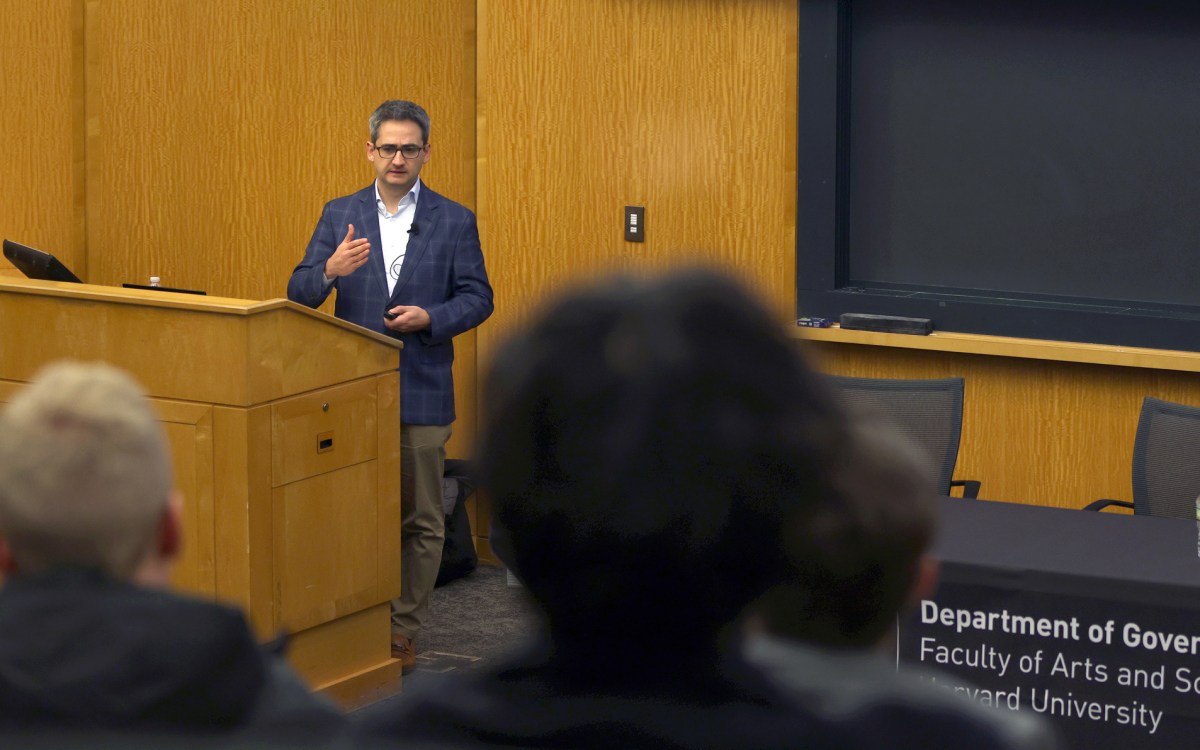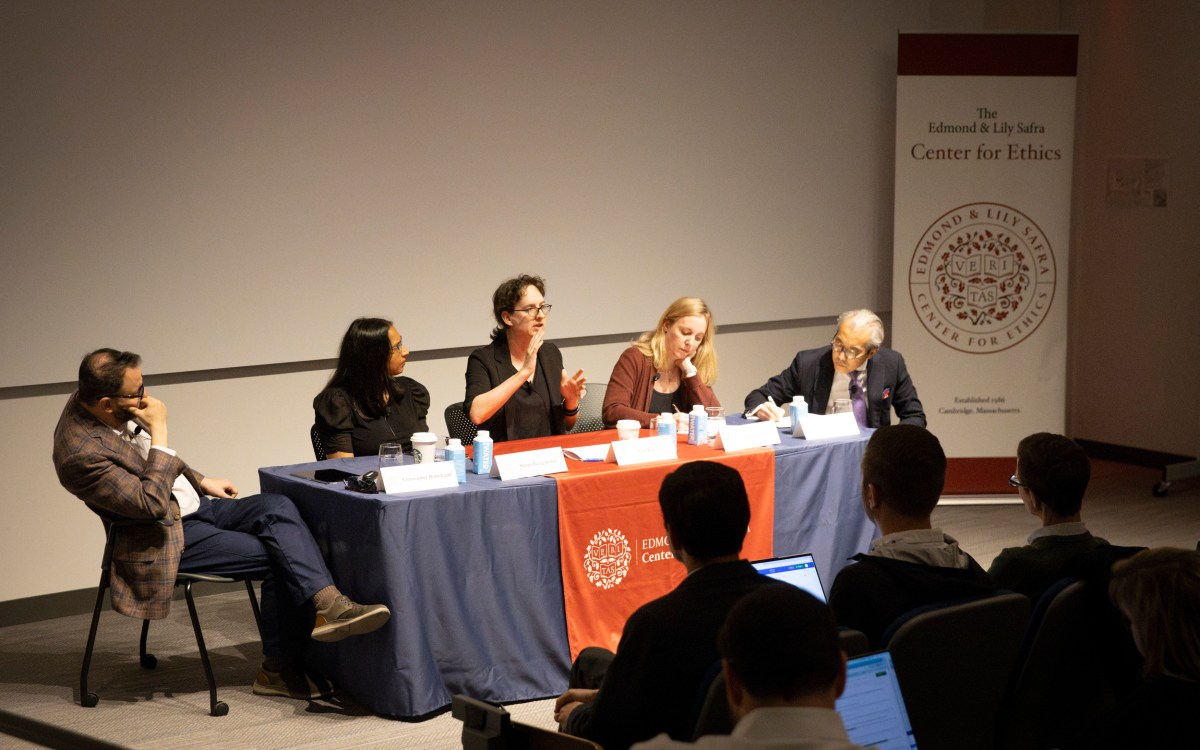
Joseph B. Fuller discusses a new report that found that businesses could plug critical labor shortage by tapping into 27 million workers who are “hidden” from corporate hiring processes.
Rose Lincoln/Harvard Staff Photographer
Answer to U.S. labor shortage? ‘Hidden’ workforce
New study says firms need to take smarter looks at job applicants excluded for the wrong reasons
Since business has picked up with the COVID vaccine rollout, record numbers of employers have struggled to find workers. In August, half of U.S. small business owners had jobs they wanted to fill, a historic high, according to a trade group survey; 91 percent said there were few or no qualified applicants. The reasons for this labor-employment mismatch are complex and not fully understood, economists say.
A new report says there is a “hidden” workforce of 27 million people in the U.S. who would gladly, and capably, fill those jobs — if given the chance. But because of hiring practices, the applications of this diverse group usually go straight to the rejection pile.
Co-author Joseph B. Fuller ’79, M.B.A. ’81, co-chair of the Managing the Future of Work project at Harvard Business School, says corporate leaders could solve many of their labor problems if they gave these workers a closer look, and gain a real advantage over competitors unwilling to do so, and improve workplace diversity. Interview has been edited for clarity and length.
Joseph B. Fuller
Q&A
GAZETTE: What was the impetus for this report?
FULLER: The vast majority of academic research on labor markets is from the supply side. It doesn’t look at the employer as an animated object that makes decisions based on a rationale that may or may not be sound. Before I was a professor at HBS, I was in industry, and it always struck me that there were these anomalies. Communities with lots of people looking for work and employers bemoaning the lack of candidates, but employers essentially acting as if a [qualified] candidate is supposed to present her or himself [for] the job they have on offer for the terms they’re offering. And if that didn’t happen, there was something quote “wrong.” They weren’t very active in addressing it themselves. Why was that?
The second thing is, if you look at the government data, it’s not actionable. [It doesn’t delineate] “this is how many long-term unemployed there are; this is how many discouraged workers there are; this is how many underemployed workers there are.” Huge numbers of people, but very little nuance in explaining why. So, I wanted to understand what’s behind these numbers.
GAZETTE: Many screened out of the application process early are people with felony convictions and people without a college degree. Who else makes up this “hidden” workforce?
FULLER: Veterans tend to be hidden because their skills, and the way those skills are described, don’t match with the skill descriptions employers are seeking. If someone’s looking for a salesperson, they’re looking for sales experience. So, they’re looking for those kinds of keywords in your résumé description of yourself. If they’re not there, you don’t get considered.
People who’ve had gaps in their work history: Half the companies in the United States have a filter to exclude applicants who have not been employed in the last six months or if there’s a gap in their work history of more than six months.
The biggest category is called NEET: Not in Employment, Education or Training. That’s a person who doesn’t have a job, doesn’t have a degree, is not in school. [Automated screening systems don’t] know what to do with them.
A big part of this research effort is to take that number [of 27 million] and break it down into identifiable chunks and give both employers and policymakers some insight into what does it take to get this part of the population into the workforce.
GAZETTE: About 99 percent of Fortune 500 companies use artificial intelligence tracking systems to screen applicants and then winnow them down to a manageable number before starting the interview process. Those systems determine who makes the cut based on specific parameters or keywords. Why such an all or nothing approach?
“The biggest category is called NEET: Not in Employment, Education or Training. That’s a person who doesn’t have a job, doesn’t have a degree, is not in school. [Automated screening systems don’t] know what to do with them.”
FULLER: We basically have a circular logic that’s taken hold. My mandate as a recruiter is to get qualified candidates as quickly as possible, as cheaply as possible. A tiny, tiny minority of jobs are searched for outside a 25-mile radius of where the job is. But [recruiters] want [to be able] to say, “We looked broadly; we really searched for all the candidates available; we looked for diverse candidates; and this is the person that best fits the job description.”
Now, all sorts of things happen inside that cycle. The first, as the report points out, is that the creation of job descriptions and their curation over time is very haphazard. Most job descriptions are not updated that often; they’re updated by recruiters with [little] input from the [relevant] supervisors or from people who are a success in the job right now.
So, what [recruiters] try to do is toggle the filters used to screen résumés, whether it’s academic attainment or years of experience or keywords or previous experiences, that [they] think are indicative that someone is qualified. When [they] get the application, they’re looking for confirmation of harder variables — yes, she graduated with a B.A. from Brandeis — and looking in the self-description for keyword capabilities that fit with the job description.
GAZETTE: Are businesses aware that these choices are locking out many people who may be right for a job?
FULLER: They understand that in trying to make the process efficient in setting rules, there’s some collateral damage. If I find a good person that the supervisor’s enthusiastic about, [and do it] fast, that’s my job. But they don’t understand that the effort to make the process very efficient is creating a significant amount of the shortage that they complain about. Most of them haven’t thought through the logic of the way they evaluate recruiters. Most are rewarded and recognized for minimizing the cost of hiring somebody and getting them fast. They are not evaluated on whether that hire becomes productive quickly, or stays with the company, [or] gets promoted.
A lot of people may say, “AI is biased.” Well, so was the old system. We’re not saying AI is awful and ought to be eradicated. We’re just saying it’s got some perverse effects and mediocre thinking. Why don’t we get some intelligent [AI], which is more nuanced than just these 0/1 [basic computer binary] outcomes?
GAZETTE: There’s a perception that hiring these workers is risky, that they won’t thrive or won’t add much value to a company. You found that’s untrue.
FULLER: Particularly in the U.S., companies that didn’t have experience working with specific populations of hidden workers have lots of negative assumptions: It’s going to be expensive; it’s going to hurt profitability; it’s going to be hard to onboard them; they can’t be productive. What we found is companies that have made some commitment to this find those concerns to be moot. In fact, once they’ve gotten a program in place, [they] find that hidden workers are more productive, are more likely to stay, are positive contributors economically. Which is a key point: This is not feel-good capitalism; this is hard-nosed capitalism. But also, very often, [it can] have a positive impact on the broader workforce.
GAZETTE: Some firms do pursue these workers, often through corporate good citizenry efforts to promote inclusivity. But you say there’s a more effective approach they ought to follow. Can you explain?
FULLER: As long as this is defined as “a way to give back,” it’s going to be limited. If it’s defined as a normal-course-of-business activity, where we recruit and develop talent from this worker population with a well-thought-out, well-designed, clear-eyed program, just the way we’d hire engineers from MIT, now you’re in the money. Now you’re going to have an extensive commitment to this. Companies that get good at this and clever about it and run it professionally, will outperform companies that don’t.

